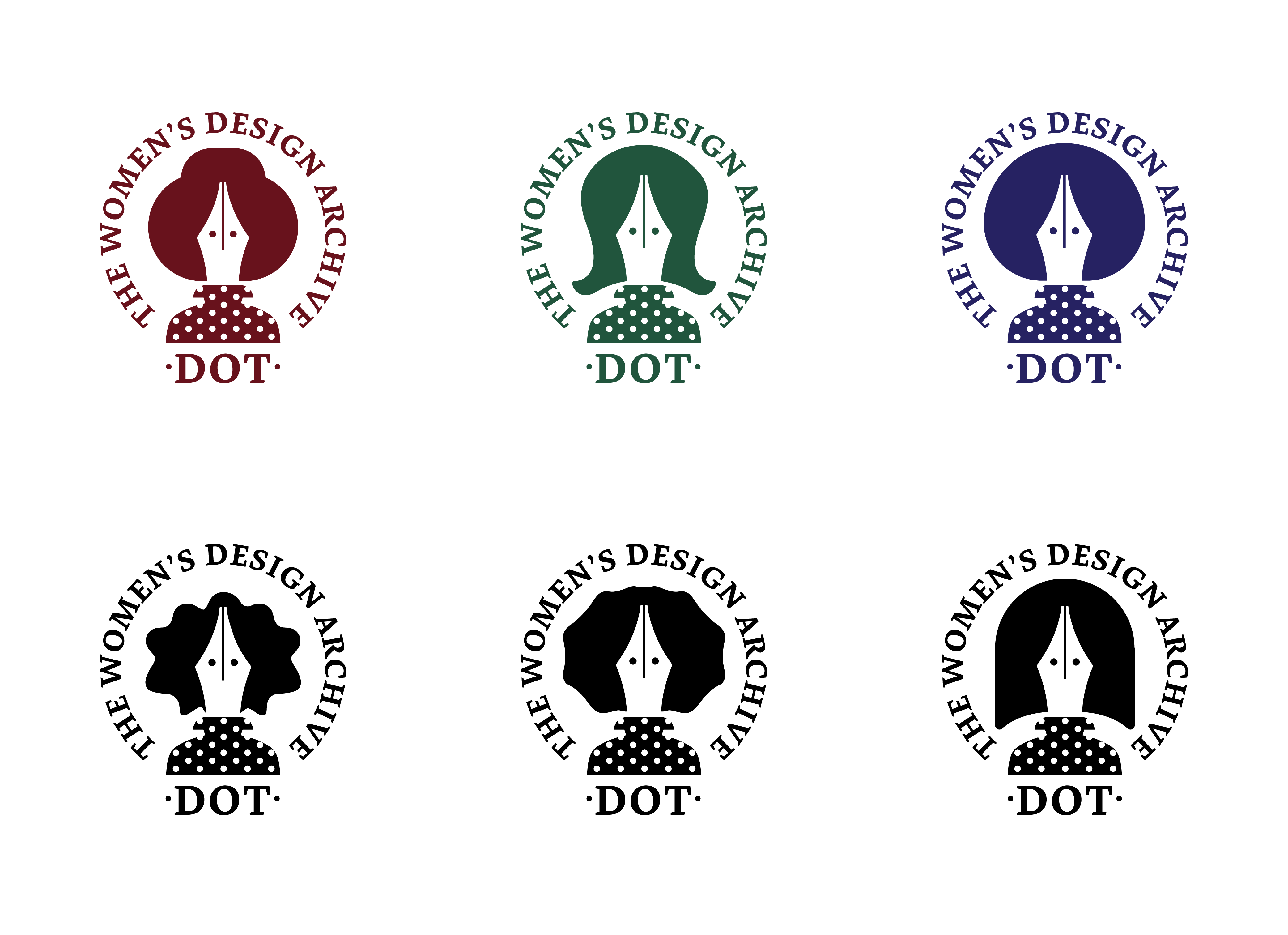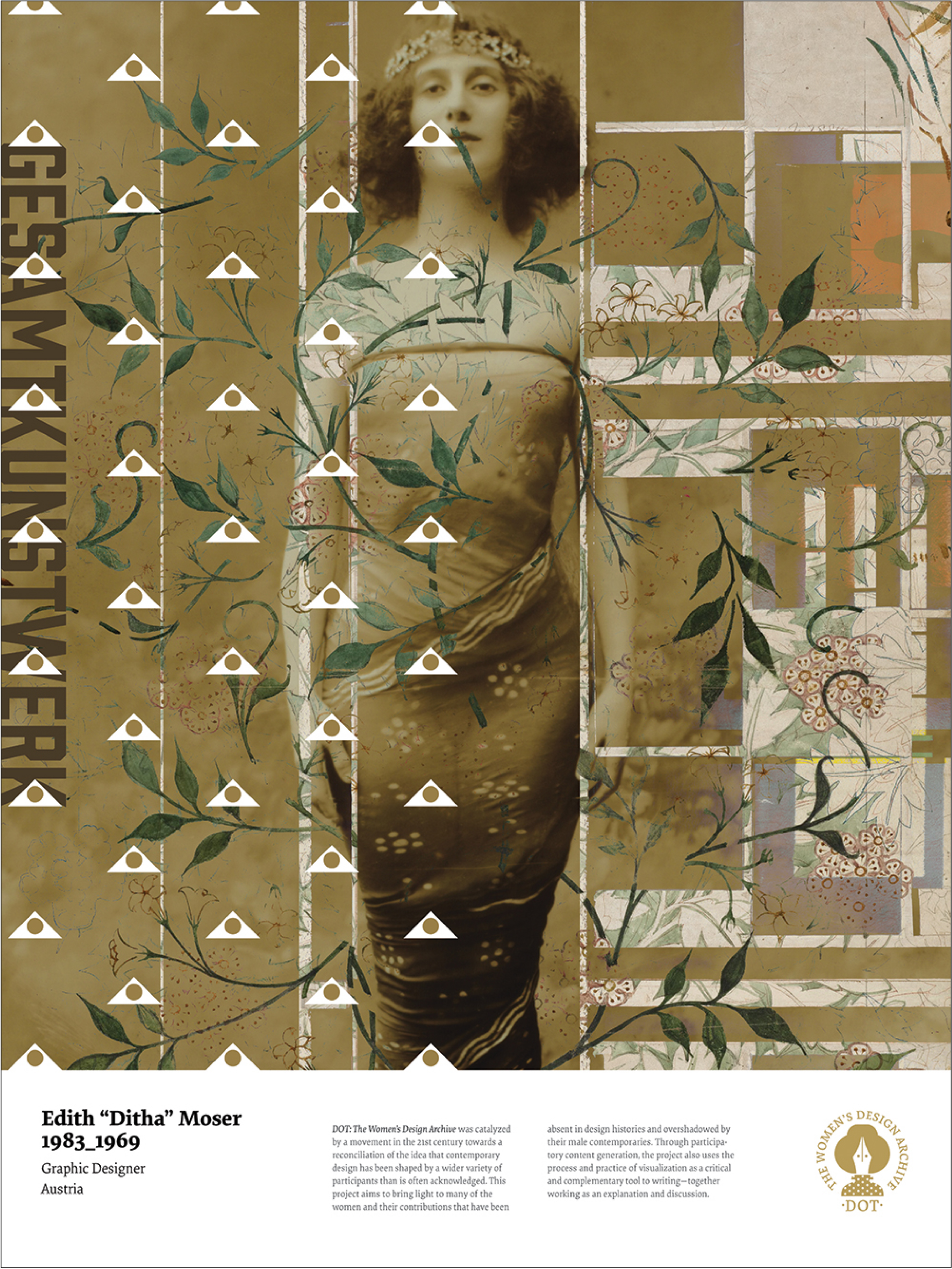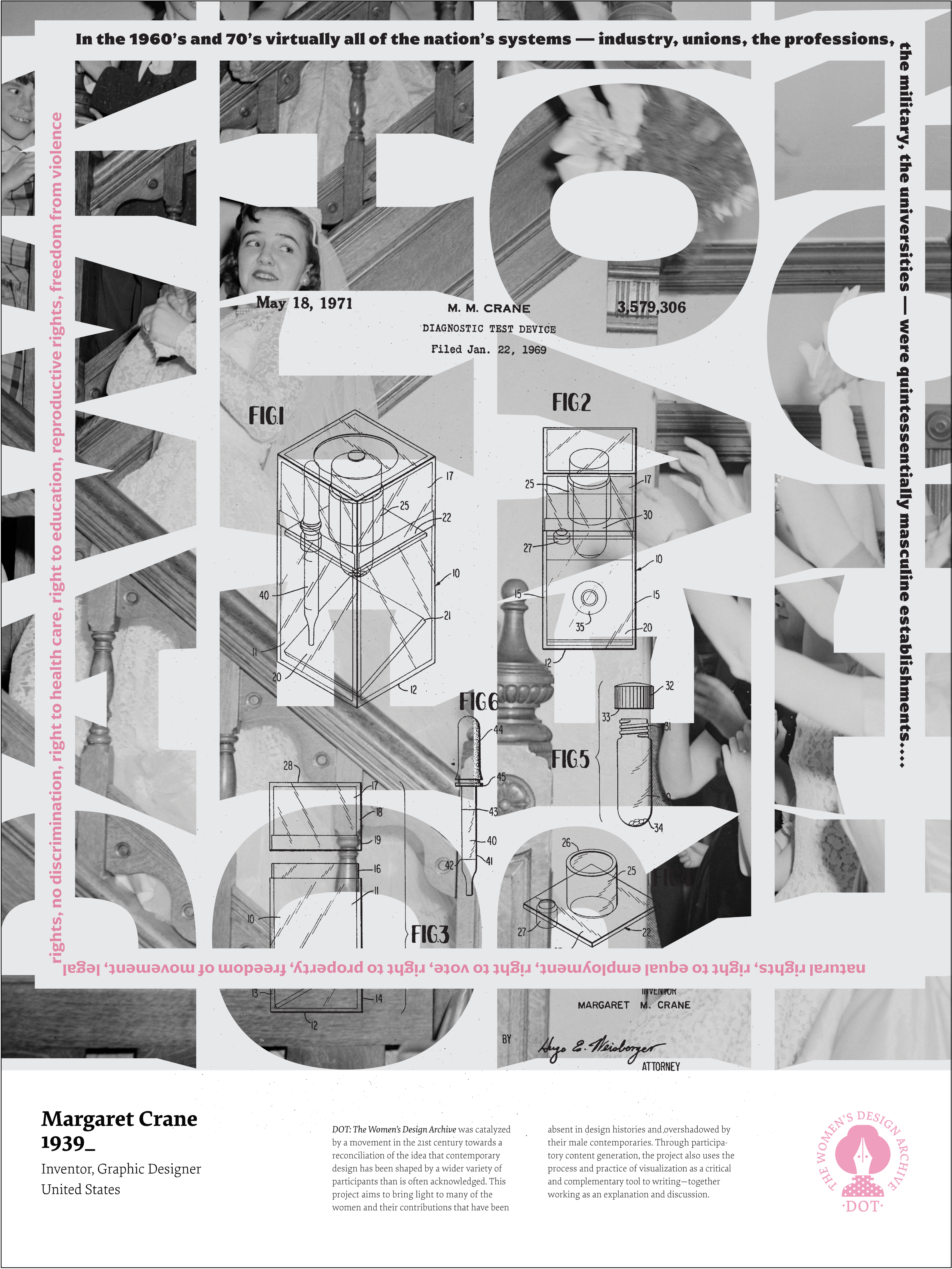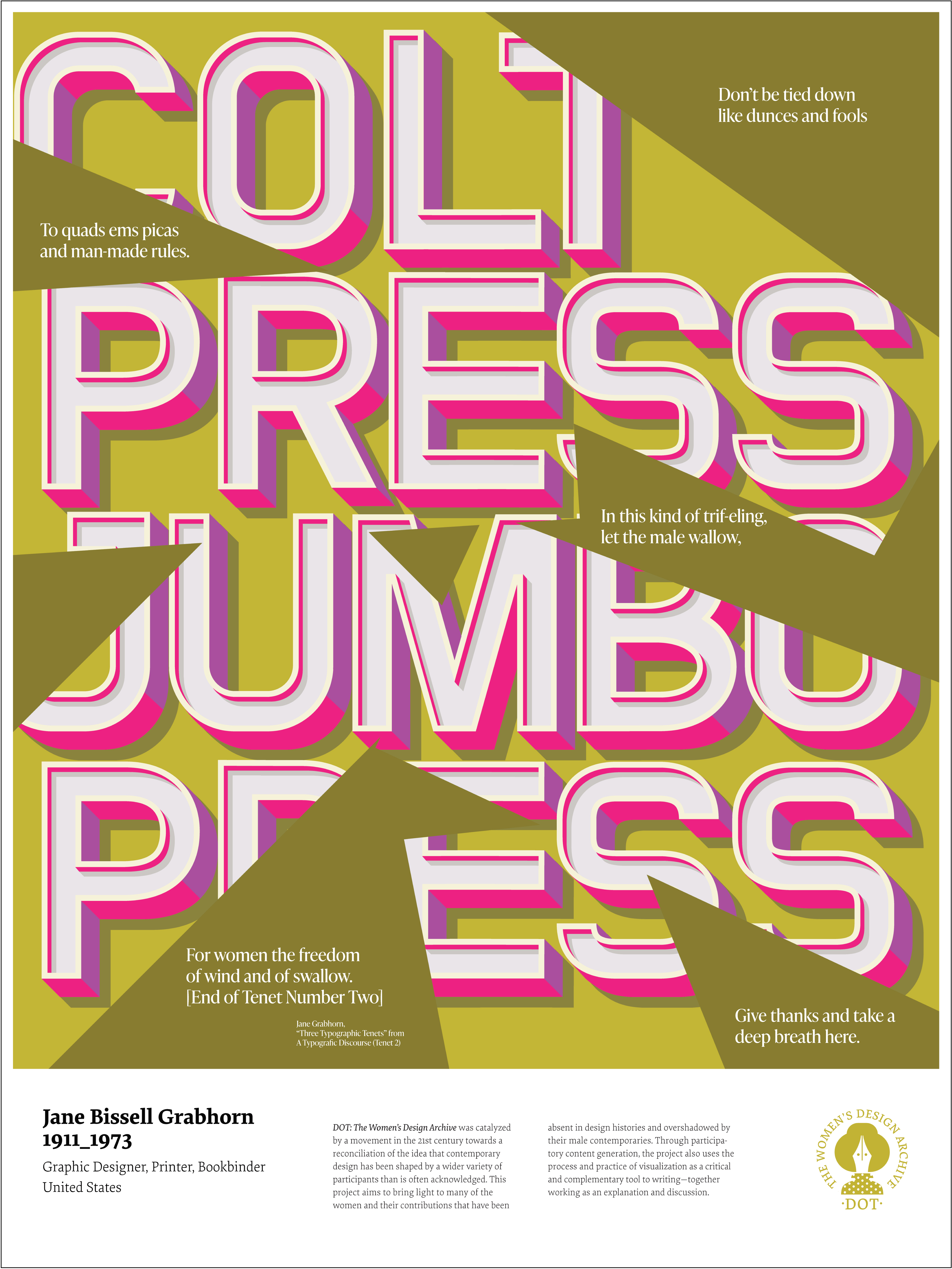Database of Talent
The Women’s Archive
In its initial phase this collaborative project started with the desire to create a comprehensive database of the women who have shaped design practice. The project shifted to a series of sketches after gathering data and learning how partial and absent the information about these women was. To examine what the archive could be these women's lives were explored in visual essays. The data continues to inform other aspects of research and practice as we uncover these talented women.

Edith Moser | 1883-1969 | Typographer | Printer
Edith was born into a wealthy Austrian family, and studied at the Academy for Applied Arts in Vienna. She is a designer who is documented as supporting or helping her husband, Koloman Moser and then disappears or lacks the dilligances of historians to archive her work or track down her progress after her husband’s death from cancer in 1918. Rather she is simply written off as having to take care of the household or children. “Despite her establishment as a graphic designer, her work output was still relatively limited and not many have survived. She stopped producing work entirely after World War I, and died at the age of 86.” She is part of a slew of women in design history we should call the “collaborative supporters” or perhaps the partners. Was she fine with group work or collaborative work, what might be discovered if we dig deeper?

Margaret Crane | 1939- | Graphic Designer | Inventor
Margaret Crane invented the first home pregnancy test at a time when it was generally illegal to get an abortion or single women were denied access to birth control pills. Her work began in 1967 as a new freelance graphic designer at Organon Pharmaceuticals. On a facility tour she observed the lab’s pregnancy testing and instantly Crane saw an opportunity for women to control this knowledge about their bodies with a home pregnancy test. It took a year of creative tinkering before she arrived at a functional test, name and brand. Typically to this era and perhaps today, the managers and executives at Organon presented so many objections and obstacles to the product being created, to her receiving any credit for the idea or financial benefits. The test which was private, convenient and time saving, reducing the time women waited to determine they were pregnant from weeks to minutes, came to market 10 years after she began her work. Crane partnered romantically and professionally with the man hired to promote the test, Ira Sturtevant, together they formed the design firm Ponzi & Weill.
Margaret Crane invented the first home pregnancy test at a time when it was generally illegal to get an abortion or single women were denied access to birth control pills. Her work began in 1967 as a new freelance graphic designer at Organon Pharmaceuticals. On a facility tour she observed the lab’s pregnancy testing and instantly Crane saw an opportunity for women to control this knowledge about their bodies with a home pregnancy test. It took a year of creative tinkering before she arrived at a functional test, name and brand. Typically to this era and perhaps today, the managers and executives at Organon presented so many objections and obstacles to the product being created, to her receiving any credit for the idea or financial benefits. The test which was private, convenient and time saving, reducing the time women waited to determine they were pregnant from weeks to minutes, came to market 10 years after she began her work. Crane partnered romantically and professionally with the man hired to promote the test, Ira Sturtevant, together they formed the design firm Ponzi & Weill.

Jane Bissell Grabhorn | 1911–1973 | PRINTER
Jane Bissell Grabhorn’s life was one filled with foundries, fonts and feminism. Grabhorn can be included in design history - along with a handful of other women - who reimagined the work of printing and designing women in an era when the male voice was dominant. Born in 1911 in San Francisco, she was educated in France, learned bookbinding and married in 1937. From her marriage onward, Grabhorn worked alongside her husband and brother at the Grabhorn press but she also ran her own imprint, the Jumbo Press until her death in 1973. The Jumbo press was a vehicle for experimentation, a print laboratory and exploring what it means to be a female printer in her era. “Employing typography and print to express feminist thought processes in her hand-press productions of satire, wit, and ephemera, Grabhorn exclusively utilized letterpress printing as a place of rebellion.” Mallory Haselberger writes in a blog post. Often our images of professionals whether they be scientists, doctors, politicians, designers or printers are most likely male. Nevertheless there exist women like Jane Grabhorn who were bold, forward thinkers, stretching the boundaries and communicating about the female condition.
